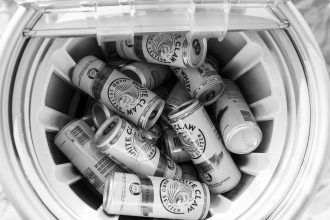Coffee contains caffeine and generally a fair amount of it, but for those of you who are caffeine sensitive but still like the taste, the decaffeinated stuff is your saving grace. Depending on where your caffeine is from can impact the amount of caffeine found in it. For example, it is significantly affected by the type of bean and the chosen decaffeinated process. The process to extract the caffeine is usually done one of three ways:
The Solvent-based process which uses a combination of methylene chloride, ethyl acetate and water to create a solvent that extracts the caffeine.
The only organic method, known as the Swiss water process which uses osmosis to extract caffeine and guarantees a 99.9% decaffeinated product.
And the Carbon dioxide process, the new man about town and most expensive method that uses carbon dioxide, a compound naturally found in coffee as a gas, to remove the caffeine and leave other flavour compounds intact.
The processes don't impact taste, it can affect the smell and colour resulting in caffeine-free alternatives appearing lighter and without that strong coffee smell.






